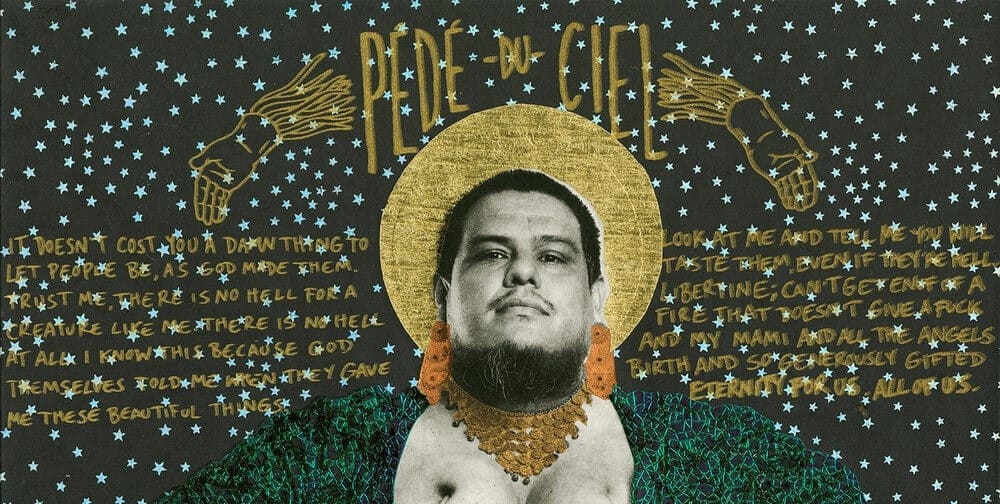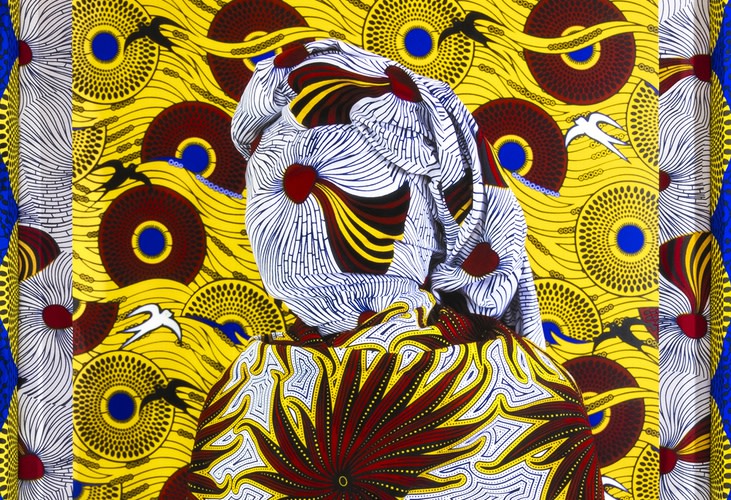-
 Gabriel García Román, Dorian, 2019
Gabriel García Román, Dorian, 2019 -
 ©Alia Ali, Odyssey, MIGRATION Series, 2021
©Alia Ali, Odyssey, MIGRATION Series, 2021Cartographies of Pattern: The Work of Alia Ali
By Geoffrey C. KoslovAlia Ali uses a global palette of fabrics and photography to map culture and history. She is a US multimedia artist, photographer, and a global traveler with a Yemeni-Bosnian heritage, who is fascinated by the use and meaning of language and the patterns of hand woven indigenous fabric As Ali expresses it: “Textile unites and divides us, both physically and symbolically.” Her art reflects on the politics of borders, colonization, language and the non-verbal passage of traditions and cultural stories through fabrics created by master artisans from around the world. As a purposeful artist on a mission, Ali has made a concerted effort to meet the craftspeople who create these fabrics. She has traveled extensively to learn about meaning and processes associated with the fabric, patterns and pigments. While the fabrics are regional, the appreciation and production has become global. On the surface, these may plainly look like an exciting colorful presentation, but what is covered and explored in the exhibition “Cartographies of Pattern” is a deeper journey, guided by Alia Ali’s imagery, into the story behind each threaded weave of her BORDERLAND, FLUX, MIGRATION, FLOW, INDIGO and حب (ḥub) // LOVE series.